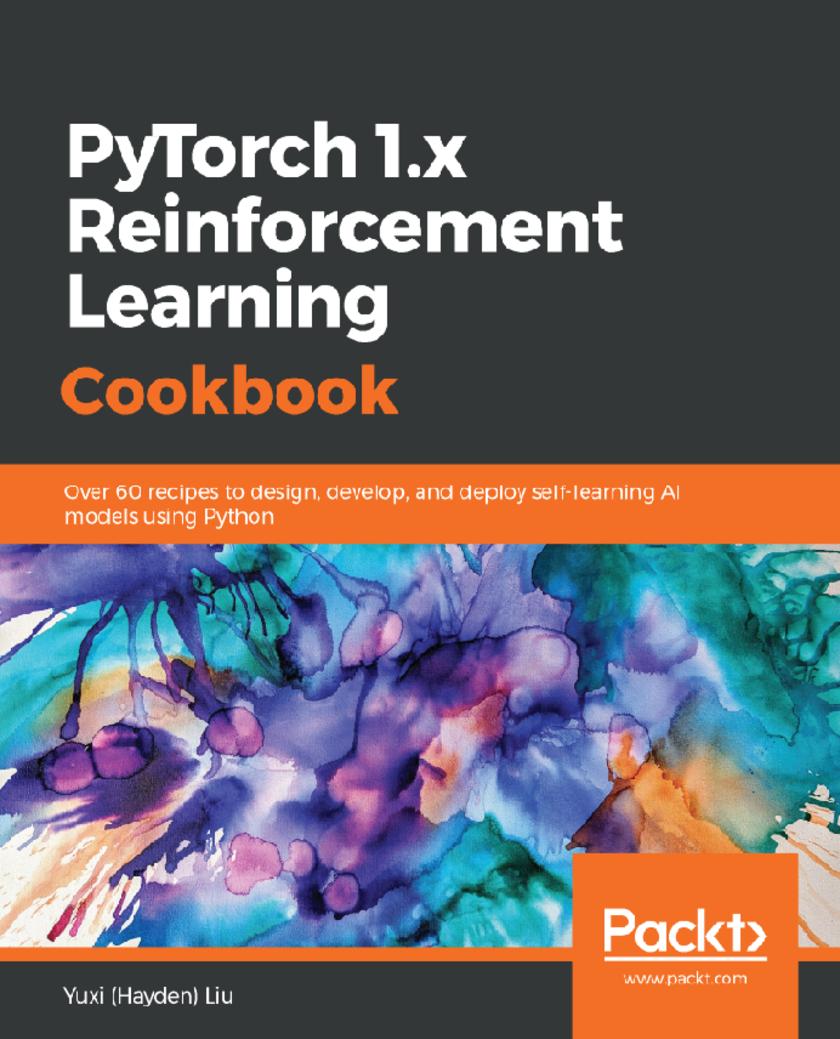
PyTorch 1.x Reinforcement Learning Cookbook
¥71.93
Implement reinforcement learning techniques and algorithms with the help of real-world examples and recipes Key Features * Use PyTorch 1.x to design and build self-learning artificial intelligence (AI) models * Implement RL algorithms to solve control and optimization challenges faced by data scientists today * Apply modern RL libraries to simulate a controlled environment for your projects Book Description Reinforcement learning (RL) is a branch of machine learning that has gained popularity in recent times. It allows you to train AI models that learn from their own actions and optimize their behavior. PyTorch has also emerged as the preferred tool for training RL models because of its efficiency and ease of use. With this book, you'll explore the important RL concepts and the implementation of algorithms in PyTorch 1.x. The recipes in the book, along with real-world examples, will help you master various RL techniques, such as dynamic programming, Monte Carlo simulations, temporal difference, and Q-learning. You'll also gain insights into industry-specific applications of these techniques. Later chapters will guide you through solving problems such as the multi-armed bandit problem and the cartpole problem using the multi-armed bandit algorithm and function approximation. You'll also learn how to use Deep Q-Networks to complete Atari games, along with how to effectively implement policy gradients. Finally, you'll discover how RL techniques are applied to Blackjack, Gridworld environments, internet advertising, and the Flappy Bird game. By the end of this book, you'll have developed the skills you need to implement popular RL algorithms and use RL techniques to solve real-world problems. What you will learn * Use Q-learning and the state–action–reward–state–action (SARSA) algorithm to solve various Gridworld problems * Develop a multi-armed bandit algorithm to optimize display advertising * Scale up learning and control processes using Deep Q-Networks * Simulate Markov Decision Processes, OpenAI Gym environments, and other common control problems * Select and build RL models, evaluate their performance, and optimize and deploy them * Use policy gradient methods to solve continuous RL problems Who this book is for Machine learning engineers, data scientists and AI researchers looking for quick solutions to different reinforcement learning problems will find this book useful. Although prior knowledge of machine learning concepts is required, experience with PyTorch will be useful but not necessary.
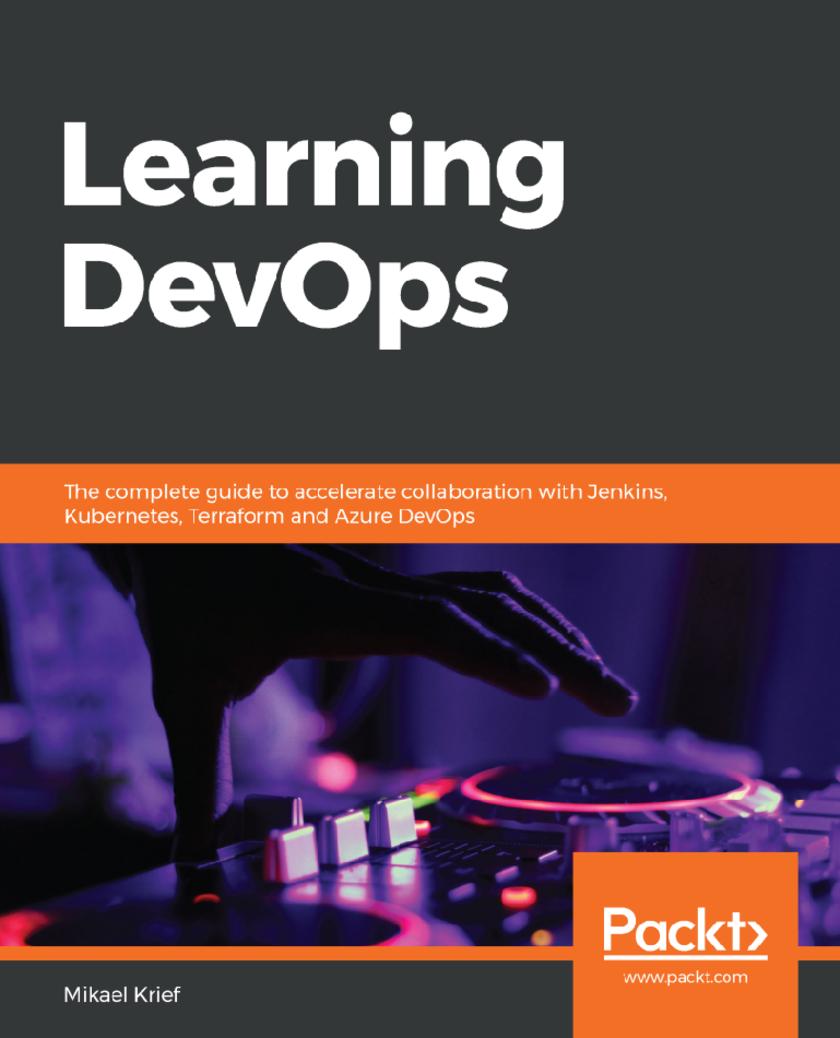
Learning DevOps
¥63.21
Simplify your DevOps roles with DevOps tools and techniques Key Features * Learn to utilize business resources effectively to increase productivity and collaboration * Leverage the ultimate open source DevOps tools to achieve continuous integration and continuous delivery (CI/CD) * Ensure faster time-to-market by reducing overall lead time and deployment downtime Book Description The implementation of DevOps processes requires the efficient use of various tools, and the choice of these tools is crucial for the sustainability of projects and collaboration between development (Dev) and operations (Ops). This book presents the different patterns and tools that you can use to provision and configure an infrastructure in the cloud. You'll begin by understanding DevOps culture, the application of DevOps in cloud infrastructure, provisioning with Terraform, configuration with Ansible, and image building with Packer. You'll then be taken through source code versioning with Git and the construction of a DevOps CI/CD pipeline using Jenkins, GitLab CI, and Azure Pipelines. This DevOps handbook will also guide you in containerizing and deploying your applications with Docker and Kubernetes. You'll learn how to reduce deployment downtime with blue-green deployment and the feature flags technique, and study DevOps practices for open source projects. Finally, you'll grasp some best practices for reducing the overall application lead time to ensure faster time to market. By the end of this book, you'll have built a solid foundation in DevOps, and developed the skills necessary to enhance a traditional software delivery process using modern software delivery tools and techniques What you will learn * Become well versed with DevOps culture and its practices * Use Terraform and Packer for cloud infrastructure provisioning * Implement Ansible for infrastructure configuration * Use basic Git commands and understand the Git flow process * Build a DevOps pipeline with Jenkins, Azure Pipelines, and GitLab CI * Containerize your applications with Docker and Kubernetes * Check application quality with SonarQube and Postman * Protect DevOps processes and applications using DevSecOps tools Who this book is for If you are a developer or a system administrator interested in understanding continuous integration, continuous delivery, and containerization with DevOps tools and techniques, this book is for you.
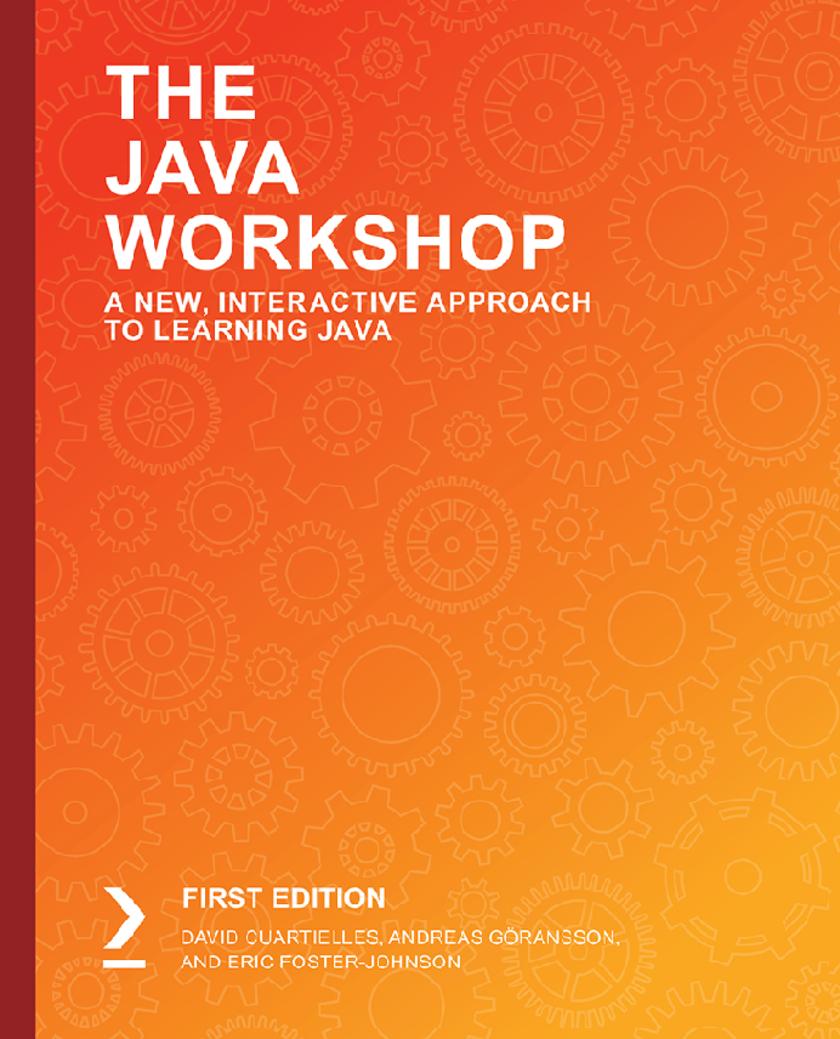
The Java Workshop
¥71.93
Cut through the noise and get real results with a step-by-step approach to learning Java programming Key Features * Ideal for the Java beginner who is getting started for the first time * A step-by-step Java tutorial with exercises and activities that help build key skills * Structured to let you progress at your own pace, on your own terms * Use your physical copy to redeem free access to the online interactive edition Book Description You already know you want to learn Java, and a smarter way to learn Java 12 is to learn by doing. The Java Workshop focuses on building up your practical skills so that you can develop high-performance Java applications that work flawlessly within the JVM across web, mobile and desktop. You'll learn from real examples that lead to real results. Throughout The Java Workshop, you'll take an engaging step-by-step approach to understanding Java. You won't have to sit through any unnecessary theory. If you're short on time you can jump into a single exercise each day or spend an entire weekend learning about Reactive programming and Unit testing. It's your choice. Learning on your terms, you'll build up and reinforce key skills in a way that feels rewarding. Every physical copy of The Java Workshop unlocks access to the interactive edition. With videos detailing all exercises and activities, you'll always have a guided solution. You can also benchmark yourself against assessments, track progress, and receive free content updates. You'll even earn a secure credential that you can share and verify online upon completion. It's a premium learning experience that's included with your printed copy. To redeem, follow the instructions located at the start of your Java book. Fast-paced and direct, The Java Workshop is the ideal companion for Java beginners. You'll build and iterate on your code like a software developer, learning along the way. This process means that you'll find that your new skills stick, embedded as best practice. A solid foundation for the years ahead. What you will learn * Get to grips with fundamental concepts and conventions of Java 12 * Write clean and well-commented code that's easy to maintain * Debug and compile logical errors and handle exceptions in your programs * Understand how to work with Java APIs and Java streams * Learn how to use third-party libraries and software development kits (SDKs) * Discover how you can work with information stored in databases * Understand how you can keep data secure with cryptography and encryption * Learn how to keep your development process bug-free with unit testing in Java Who this book is for Our goal at Packt is to help you be successful, in whatever it is you choose to do. The Java Workshop is an ideal Java tutorial for the Java beginner who is just getting started. Pick up a Workshop today, and let Packt help you develop skills that stick with you for life.
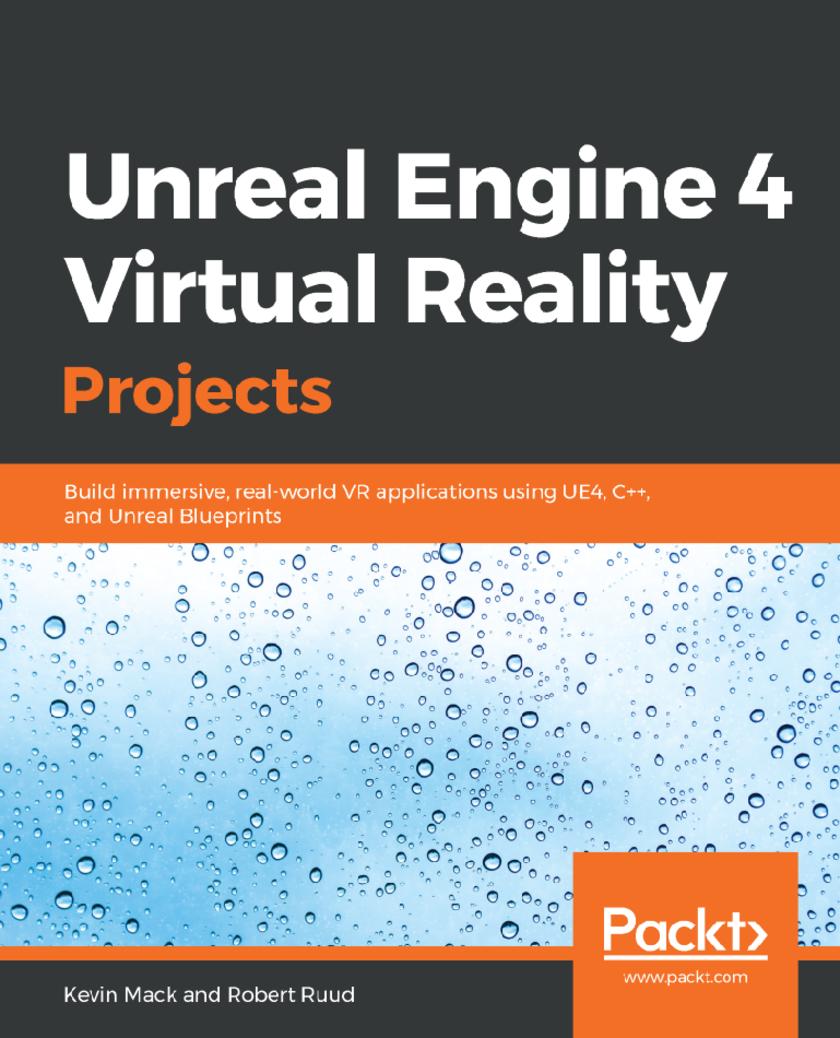
Unreal Engine 4 Virtual Reality Projects
¥70.84
Learn to design and build Virtual Reality experiences, applications, and games in Unreal Engine 4 through a series of practical, hands-on projects that teach you to create controllable avatars, user interfaces, and more. Key Features * Deploy your virtual reality applications on the latest Oculus Go and Samsung Gear * Build real-world applications such as 3D UIs, mini games, and 360° media player applications using Unreal Engine 4 * Master multiplayer networking and build rich multi-user VR experiences Book Description Unreal Engine 4 (UE4) is a powerful tool for developing VR games and applications. With its visual scripting language, Blueprint, and built-in support for all major VR headsets, it's a perfect tool for designers, artists, and engineers to realize their visions in VR. This book will guide you step-by-step through a series of projects that teach essential concepts and techniques for VR development in UE4. You will begin by learning how to think about (and design for) VR and then proceed to set up a development environment. A series of practical projects follows, taking you through essential VR concepts. Through these exercises, you'll learn how to set up UE4 projects that run effectively in VR, how to build player locomotion schemes, and how to use hand controllers to interact with the world. You'll then move on to create user interfaces in 3D space, use the editor's VR mode to build environments directly in VR, and profile/optimize worlds you've built. Finally, you'll explore more advanced topics, such as displaying stereo media in VR, networking in Unreal, and using plugins to extend the engine. Throughout, this book focuses on creating a deeper understanding of why the relevant tools and techniques work as they do, so you can use the techniques and concepts learned here as a springboard for further learning and exploration in VR. What you will learn * Understand design principles and concepts for building VR applications * Set up your development environment with Unreal Blueprints and C++ * Create a player character with several locomotion schemes * Evaluate and solve performance problems in VR to maintain high frame rates * Display mono and stereo videos in VR * Extend Unreal Engine's capabilities using various plugins Who this book is for This book is for anyone interested in learning to develop Virtual Reality games and applications using UE4. Developers new to UE4 will benefit from hands-on projects that guide readers through clearly-explained steps, while both new and experienced developers will learn crucial principles and techniques for VR development in UE4.
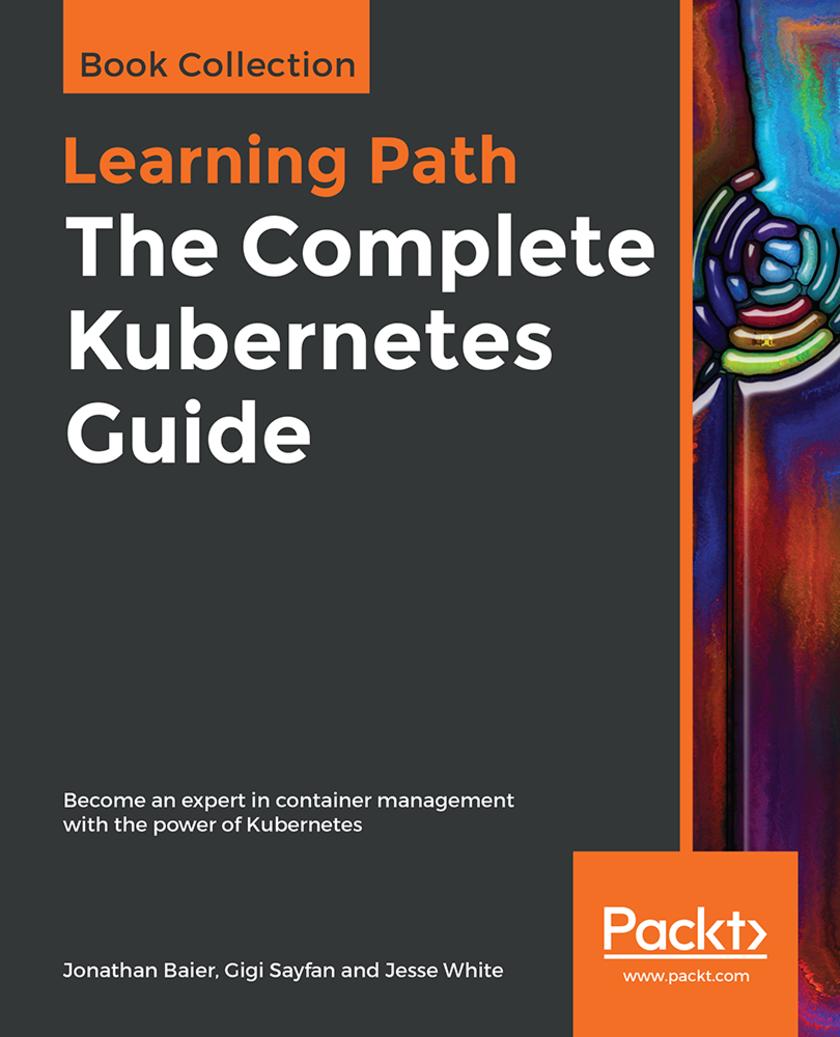
The Complete Kubernetes Guide
¥88.28
Design, deploy, and manage large-scale containers using Kubernetes Key Features * Gain insight into the latest features of Kubernetes, including Prometheus and API aggregation * Discover ways to keep your clusters always available, scalable, and up-to-date * Master the skills of designing and deploying large clusters on various cloud platforms Book Description If you are running a number of containers and want to be able to automate the way they’re managed, it can be helpful to have Kubernetes at your disposal. This Learning Path guides you through core Kubernetes constructs, such as pods, services, replica sets, replication controllers, and labels. You'll get started by learning how to integrate your build pipeline and deployments in a Kubernetes cluster. As you cover more chapters in the Learning Path, you'll get up to speed with orchestrating updates behind the scenes, avoiding downtime on your cluster, and dealing with underlying cloud provider instability in your cluster. With the help of real-world use cases, you'll also explore options for network configuration, and understand how to set up, operate, and troubleshoot various Kubernetes networking plugins. In addition to this, you'll gain insights into custom resource development and utilization in automation and maintenance workflows. By the end of this Learning Path, you'll have the expertise you need to progress from an intermediate to an advanced level of understanding Kubernetes. This Learning Path includes content from the following Packt products: * Getting Started with Kubernetes - Third Edition by Jonathan Baier and Jesse White * Mastering Kubernetes - Second Edition by Gigi Sayfan What you will learn * Download, install, and configure the Kubernetes code base * Create and configure custom Kubernetes resources * Use third-party resources in your automation workflows * Deliver applications as standard packages * Set up and access monitoring and logging for Kubernetes clusters * Set up external access to applications running in the cluster * Manage and scale Kubernetes with hosted platforms on Amazon Web Services (AWS), Azure, and Google Cloud Platform (GCP) * Run multiple clusters and manage them from a single control plane Who this book is for If you are a developer or a system administrator with an intermediate understanding of Kubernetes and want to master its advanced features, then this book is for you. Basic knowledge of networking is required to easily understand the concepts explained.
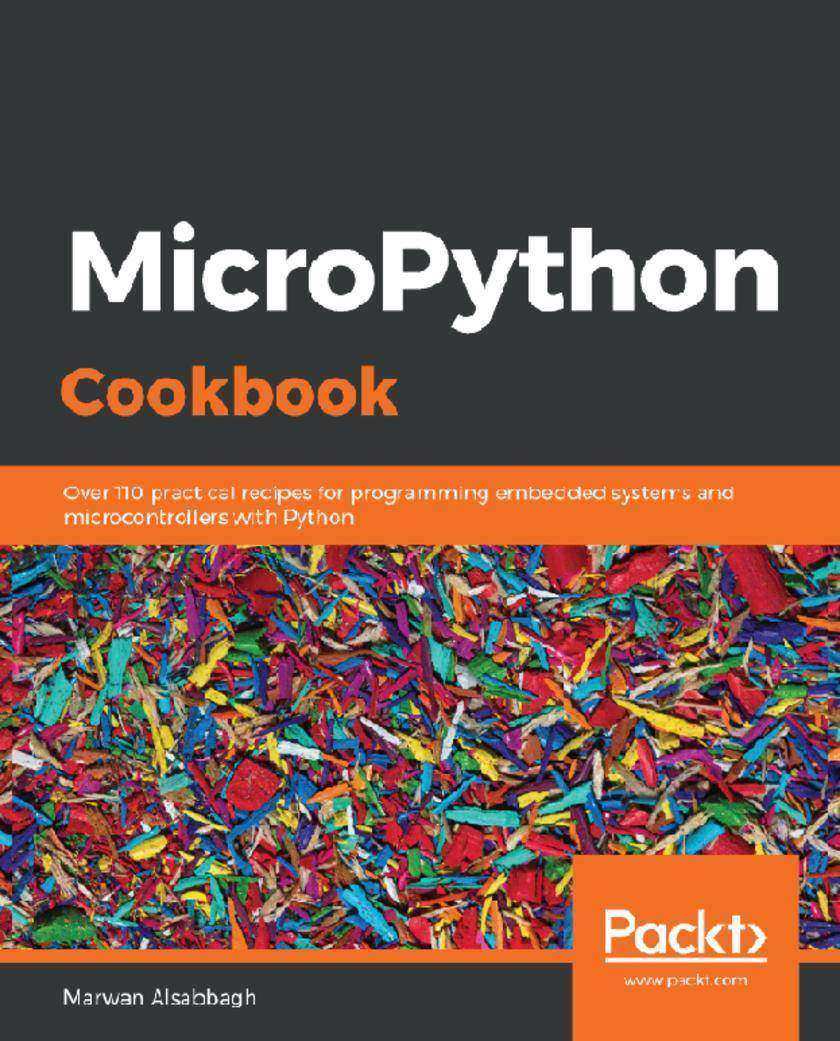
MicroPython Cookbook
¥70.84
Learn how you can control LEDs, make music, and read sensor data using popular microcontrollers such as Adafruit Circuit Playground, ESP8266, and the BBC micro:bit Key Features * Load and execute your first program with MicroPython * Program an IoT device to retrieve weather data using a RESTful API * Get to grips with integrating hardware, programming, and networking concepts with MicroPython Book Description MicroPython is an open source implementation of Python 3 that runs in embedded environments. With MicroPython, you can write clean and simple Python code to control hardware instead of using complex low-level languages like C and C++. This book guides you through all the major applications of the MicroPython platform to build and program projects that use microcontrollers. The MicroPython book covers recipes that’ll help you experiment with the programming environment and hardware programmed in MicroPython. You’ll find tips and techniques for building a variety of objects and prototypes that can sense and respond to touch, sound, position, heat, and light. This book will take you through the uses of MicroPython with a variety of popular input devices and sensors. You’ll learn techniques for handling time delays and sensor readings, and apply advanced coding techniques to create complex projects. As you advance, you’ll get to deal with Internet of Things (IoT) devices and integration with other online web services. Furthermore, you'll also use MicroPython to make music with bananas and create portable multiplayer video games that incorporate sound and light animations into the game play. By the end of the book, you'll have mastered tips and tricks to troubleshoot your development problems and push your MicroPython project to the next level! What you will learn * Execute code without any need for compiling or uploading using REPL (read-evaluate-print-loop) * Program and control LED matrix and NeoPixel drivers to display patterns and colors * Build projects that make use of light, temperature, and touch sensors * Configure devices to create Wi-Fi access points and use network modules to scan and connect to existing networks * Use Pulse Width Modulation to control DC motors and servos * Build an IoT device to display live weather data from the Internet at the touch of a button Who this book is for If you want to build and program projects that use microcontrollers, this book will offer you dozens of recipes to guide you through all the major applications of the MicroPython platform. Although no knowledge of MicroPython or microcontrollers is expected, a general understanding of Python is necessary to get started with this book.
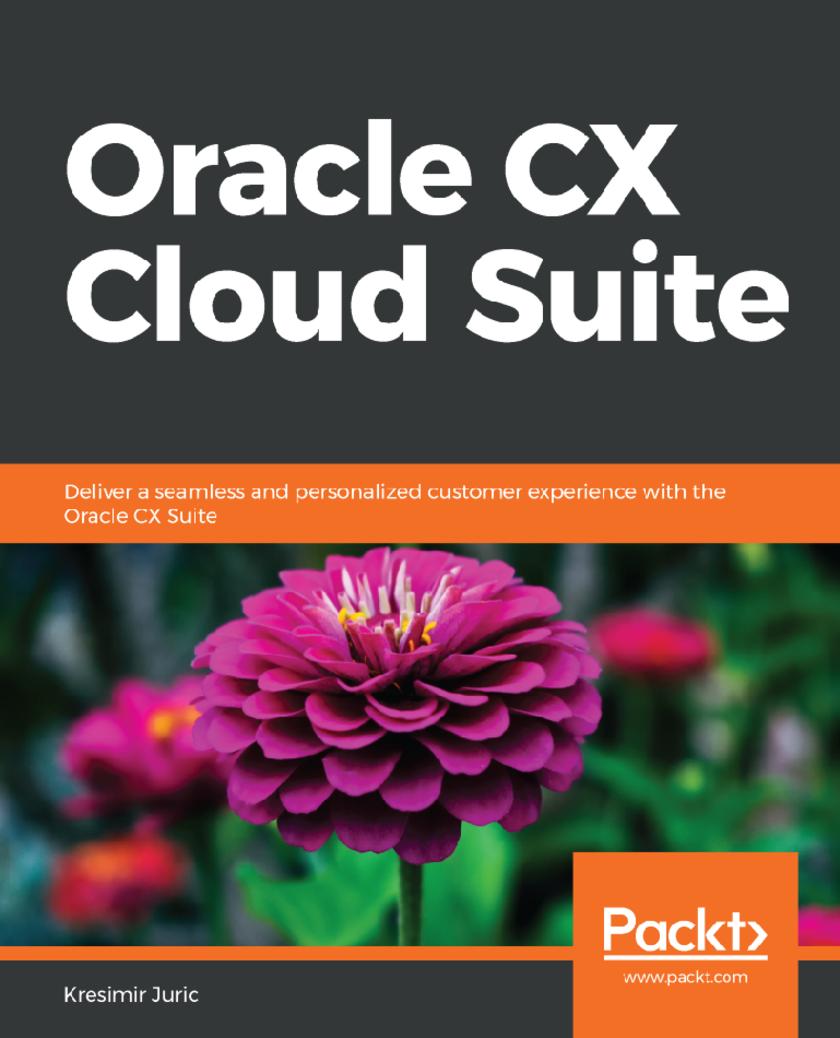
Oracle CX Cloud Suite
¥63.21
Gain a complete overview of Oracle CX Cloud Suite and its tools for functions ranging from marketing to sales and commerce to service Key Features * Make optimal use of your Oracle CX Cloud Suite to improve business results * Achieve improved customer insights through Oracle CX’s advanced capabilities * Learn how to design a CX solution architecture Book Description Oracle CX Cloud offers features and capabilities that help companies excel at sales, customer management, and much more. This book is a detailed guide to implementing cloud solutions and helping administrators of all levels thoroughly understand the platform. Oracle CX Cloud Suite begins with an introduction to high-level Oracle architecture and examines what CX offers over CRM. You’ll explore the different cloud-based tools for marketing, sales, and customer services, among others. The book then delves into deployment by covering basic settings, setting up users, and provisioning. You’ll see how to integrate the CX suite to work together to interact with the environment and connect with legacy systems, social connectors, and internet services. The book concludes with a use case demonstrating how the entire Oracle CX Suite is set up, and also covers how to leverage Oracle ICS and Oracle CX Cloud for hybrid deployment. By end of the book, you will have learned about the working of the Oracle CX Cloud Suite and how to orchestrate user experience across all products seamlessly. What you will learn * Differentiate between Oracle CRM and CX Cloud suites * Explore a variety of Oracle CX Cloud tools for marketing and sales * Set up users and database connections during deployment * Employ Cloud Suite CX tools to aid in planning and analysis * Implement hybrid Oracle CX solutions and connect with legacy systems * Integrate with social media connectors like Facebook and LinkedIn * Leverage Oracle ICS and Oracle CX Suite to improve business results Who this book is for This book is for administrators who want to develop and strengthen their Oracle CX Cloud Suite skills in the areas of configuration and system management. Whether you are a new administrator or an experienced professional, this book will enhance your understanding of the new Oracle CX features.
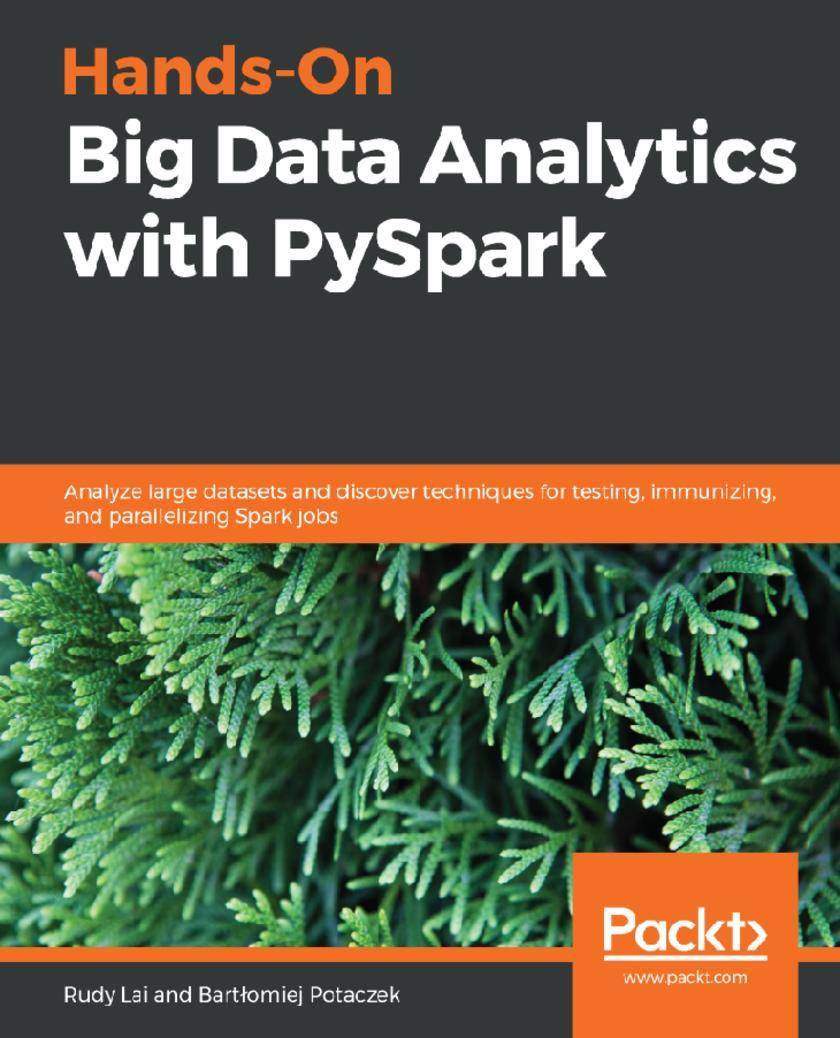
Hands-On Big Data Analytics with PySpark
¥43.59
Use PySpark to easily crush messy data at-scale and discover proven techniques to create testable, immutable, and easily parallelizable Spark jobs Key Features * Work with large amounts of agile data using distributed datasets and in-memory caching * Source data from all popular data hosting platforms, such as HDFS, Hive, JSON, and S3 * Employ the easy-to-use PySpark API to deploy big data Analytics for production Book Description Apache Spark is an open source parallel-processing framework that has been around for quite some time now. One of the many uses of Apache Spark is for data analytics applications across clustered computers. In this book, you will not only learn how to use Spark and the Python API to create high-performance analytics with big data, but also discover techniques for testing, immunizing, and parallelizing Spark jobs. You will learn how to source data from all popular data hosting platforms, including HDFS, Hive, JSON, and S3, and deal with large datasets with PySpark to gain practical big data experience. This book will help you work on prototypes on local machines and subsequently go on to handle messy data in production and at scale. This book covers installing and setting up PySpark, RDD operations, big data cleaning and wrangling, and aggregating and summarizing data into useful reports. You will also learn how to implement some practical and proven techniques to improve certain aspects of programming and administration in Apache Spark. By the end of the book, you will be able to build big data analytical solutions using the various PySpark offerings and also optimize them effectively. What you will learn * Get practical big data experience while working on messy datasets * Analyze patterns with Spark SQL to improve your business intelligence * Use PySpark's interactive shell to speed up development time * Create highly concurrent Spark programs by leveraging immutability * Discover ways to avoid the most expensive operation in the Spark API: the shuffle operation * Re-design your jobs to use reduceByKey instead of groupBy * Create robust processing pipelines by testing Apache Spark jobs Who this book is for This book is for developers, data scientists, business analysts, or anyone who needs to reliably analyze large amounts of large-scale, real-world data. Whether you're tasked with creating your company's business intelligence function or creating great data platforms for your machine learning models, or are looking to use code to magnify the impact of your business, this book is for you.
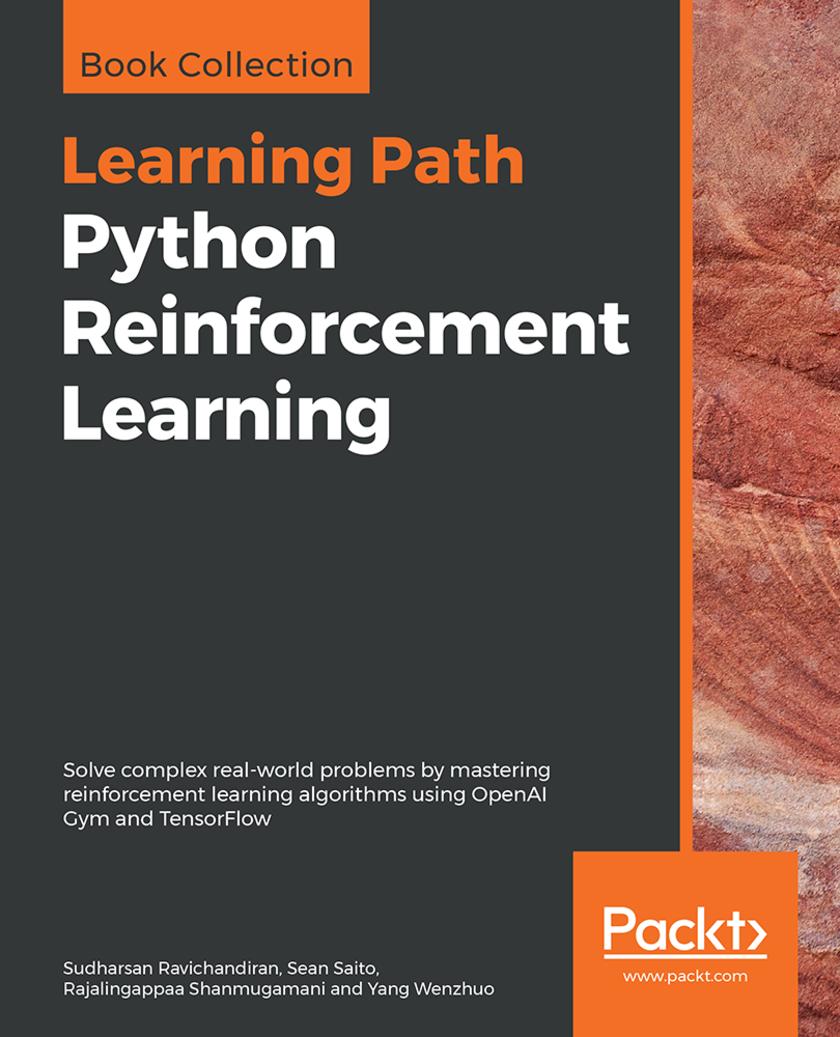
Python Reinforcement Learning
¥88.28
Apply modern reinforcement learning and deep reinforcement learning methods using Python and its powerful libraries Key Features * Your entry point into the world of artificial intelligence using the power of Python * An example-rich guide to master various RL and DRL algorithms * Explore the power of modern Python libraries to gain confidence in building self-trained applications Book Description Reinforcement Learning (RL) is the trending and most promising branch of artificial intelligence. This Learning Path will help you master not only the basic reinforcement learning algorithms but also the advanced deep reinforcement learning algorithms. The Learning Path starts with an introduction to RL followed by OpenAI Gym, and TensorFlow. You will then explore various RL algorithms, such as Markov Decision Process, Monte Carlo methods, and dynamic programming, including value and policy iteration. You'll also work on various datasets including image, text, and video. This example-rich guide will introduce you to deep RL algorithms, such as Dueling DQN, DRQN, A3C, PPO, and TRPO. You will gain experience in several domains, including gaming, image processing, and physical simulations. You'll explore TensorFlow and OpenAI Gym to implement algorithms that also predict stock prices, generate natural language, and even build other neural networks. You will also learn about imagination-augmented agents, learning from human preference, DQfD, HER, and many of the recent advancements in RL. By the end of the Learning Path, you will have all the knowledge and experience needed to implement RL and deep RL in your projects, and you enter the world of artificial intelligence to solve various real-life problems. This Learning Path includes content from the following Packt products: * Hands-On Reinforcement Learning with Python by Sudharsan Ravichandiran * Python Reinforcement Learning Projects by Sean Saito, Yang Wenzhuo, and Rajalingappaa Shanmugamani What you will learn * Train an agent to walk using OpenAI Gym and TensorFlow * Solve multi-armed-bandit problems using various algorithms * Build intelligent agents using the DRQN algorithm to play the Doom game * Teach your agent to play Connect4 using AlphaGo Zero * Defeat Atari arcade games using the value iteration method * Discover how to deal with discrete and continuous action spaces in various environments Who this book is for If you’re an ML/DL enthusiast interested in AI and want to explore RL and deep RL from scratch, this Learning Path is for you. Prior knowledge of linear algebra is expected.
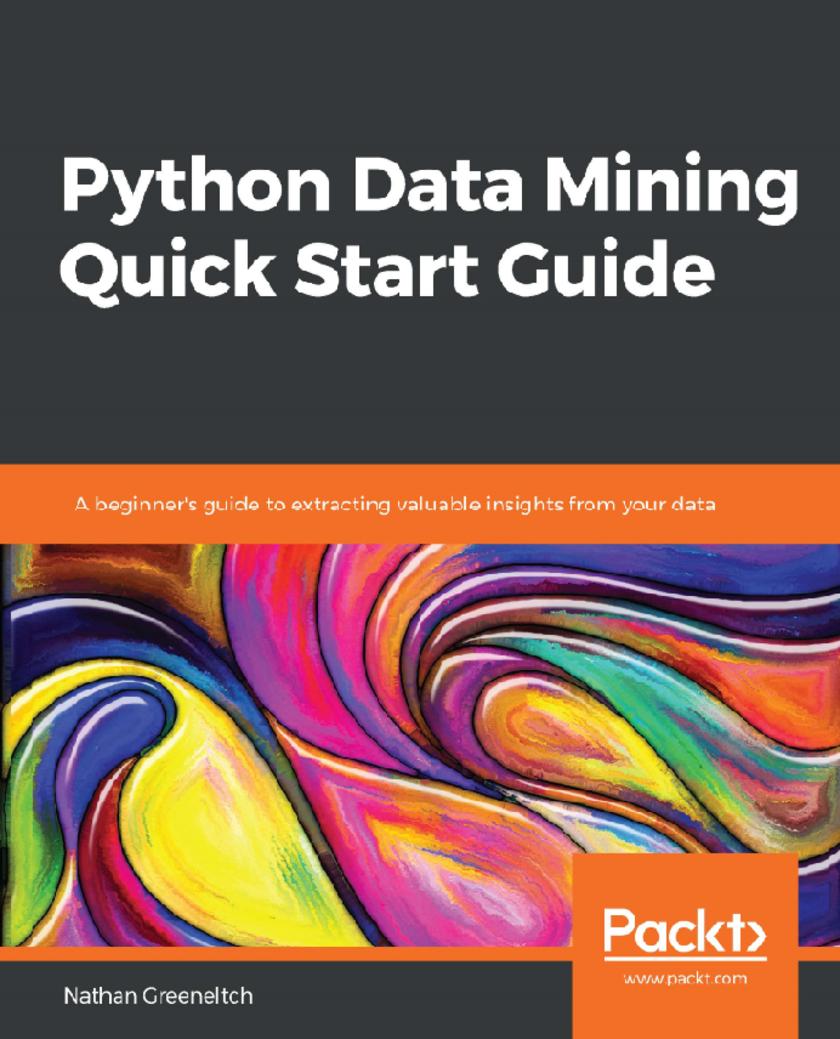
Python Data Mining Quick Start Guide
¥53.40
Explore the different data mining techniques using the libraries and packages offered by Python Key Features * Grasp the basics of data loading, cleaning, analysis, and visualization * Use the popular Python libraries such as NumPy, pandas, matplotlib, and scikit-learn for data mining * Your one-stop guide to build efficient data mining pipelines without going into too much theory Book Description Data mining is a necessary and predictable response to the dawn of the information age. It is typically defined as the pattern and/ or trend discovery phase in the data mining pipeline, and Python is a popular tool for performing these tasks as it offers a wide variety of tools for data mining. This book will serve as a quick introduction to the concept of data mining and putting it to practical use with the help of popular Python packages and libraries. You will get a hands-on demonstration of working with different real-world datasets and extracting useful insights from them using popular Python libraries such as NumPy, pandas, scikit-learn, and matplotlib. You will then learn the different stages of data mining such as data loading, cleaning, analysis, and visualization. You will also get a full conceptual description of popular data transformation, clustering, and classification techniques. By the end of this book, you will be able to build an efficient data mining pipeline using Python without any hassle. What you will learn * Explore the methods for summarizing datasets and visualizing/plotting data * Collect and format data for analytical work * Assign data points into groups and visualize clustering patterns * Learn how to predict continuous and categorical outputs for data * Clean, filter noise from, and reduce the dimensions of data * Serialize a data processing model using scikit-learn’s pipeline feature * Deploy the data processing model using Python’s pickle module Who this book is for Python developers interested in getting started with data mining will love this book. Budding data scientists and data analysts looking to quickly get to grips with practical data mining with Python will also find this book to be useful. Knowledge of Python programming is all you need to get started.
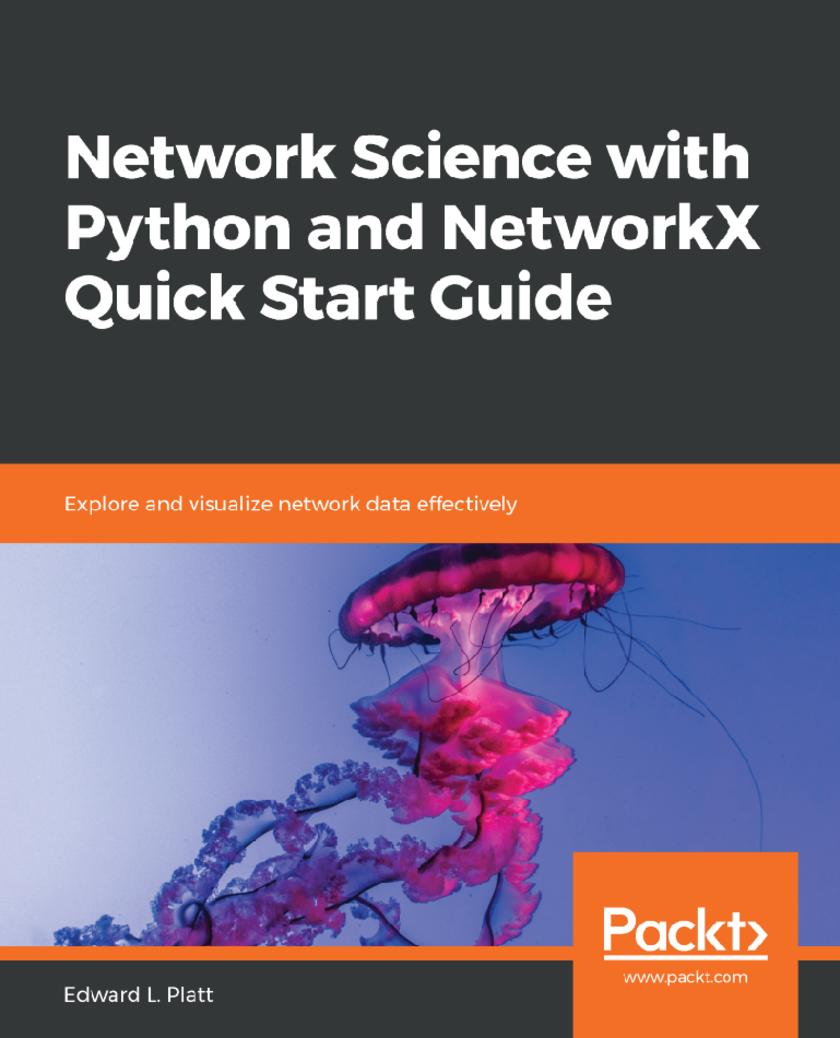
Network Science with Python and NetworkX Quick Start Guide
¥53.40
Manipulate and analyze network data with the power of Python and NetworkX Key Features * Understand the terminology and basic concepts of network science * Leverage the power of Python and NetworkX to represent data as a network * Apply common techniques for working with network data of varying sizes Book Description NetworkX is a leading free and open source package used for network science with the Python programming language. NetworkX can track properties of individuals and relationships, find communities, analyze resilience, detect key network locations, and perform a wide range of important tasks. With the recent release of version 2, NetworkX has been updated to be more powerful and easy to use. If you’re a data scientist, engineer, or computational social scientist, this book will guide you in using the Python programming language to gain insights into real-world networks. Starting with the fundamentals, you’ll be introduced to the core concepts of network science, along with examples that use real-world data and Python code. This book will introduce you to theoretical concepts such as scale-free and small-world networks, centrality measures, and agent-based modeling. You’ll also be able to look for scale-free networks in real data and visualize a network using circular, directed, and shell layouts. By the end of this book, you’ll be able to choose appropriate network representations, use NetworkX to build and characterize networks, and uncover insights while working with real-world systems. What you will learn * Use Python and NetworkX to analyze the properties of individuals and relationships * Encode data in network nodes and edges using NetworkX * Manipulate, store, and summarize data in network nodes and edges * Visualize a network using circular, directed and shell layouts * Find out how simulating behavior on networks can give insights into real-world problems * Understand the ongoing impact of network science on society, and its ethical considerations Who this book is for If you are a programmer or data scientist who wants to manipulate and analyze network data in Python, this book is perfect for you. Although prior knowledge of network science is not necessary, some Python programming experience will help you understand the concepts covered in the book easily.
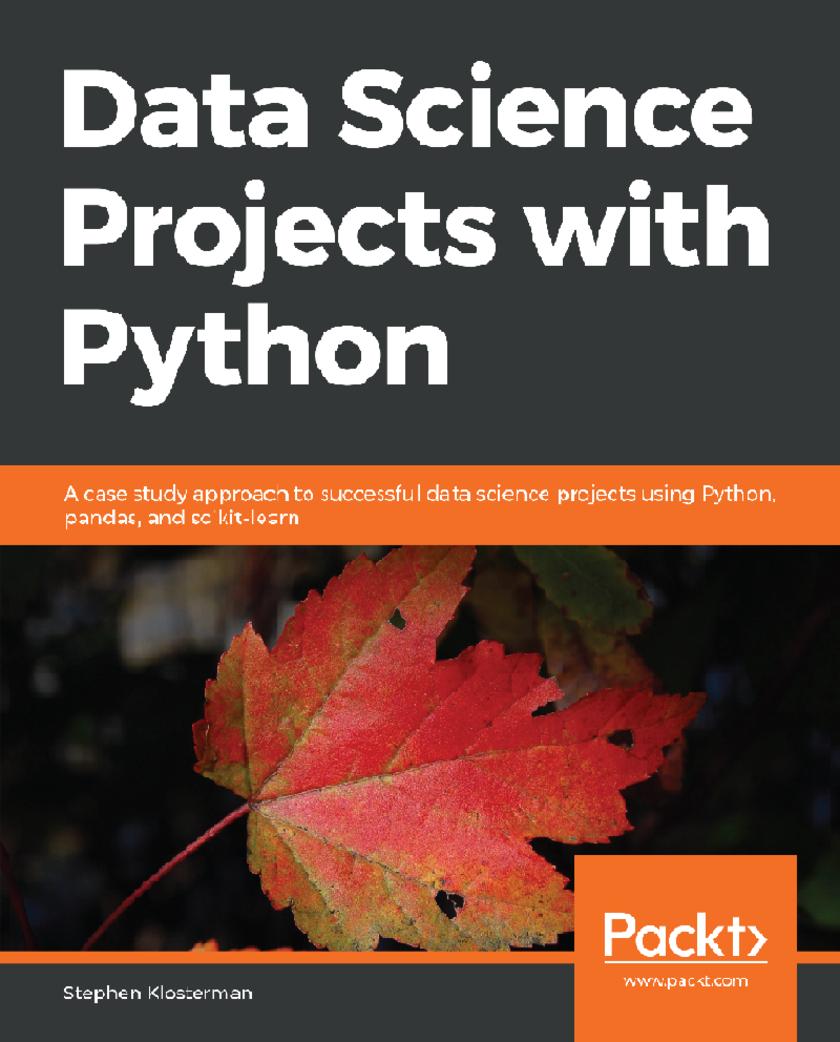
Data Science Projects with Python
¥62.12
Gain hands-on experience with industry-standard data analysis and machine learning tools in Python Key Features * Learn techniques to use data to identify the exact problem to be solved * Visualize data using different graphs * Identify how to select an appropriate algorithm for data extraction Book Description Data Science Projects with Python is designed to give you practical guidance on industry-standard data analysis and machine learning tools in Python, with the help of realistic data. The book will help you understand how you can use pandas and Matplotlib to critically examine a dataset with summary statistics and graphs, and extract the insights you seek to derive. You will continue to build on your knowledge as you learn how to prepare data and feed it to machine learning algorithms, such as regularized logistic regression and random forest, using the scikit-learn package. You’ll discover how to tune the algorithms to provide the best predictions on new and, unseen data. As you delve into later chapters, you’ll be able to understand the working and output of these algorithms and gain insight into not only the predictive capabilities of the models but also their reasons for making these predictions. By the end of this book, you will have the skills you need to confidently use various machine learning algorithms to perform detailed data analysis and extract meaningful insights from unstructured data. What you will learn * Install the required packages to set up a data science coding environment * Load data into a Jupyter Notebook running Python * Use Matplotlib to create data visualizations * Fit a model using scikit-learn * Use lasso and ridge regression to reduce overfitting * Fit and tune a random forest model and compare performance with logistic regression * Create visuals using the output of the Jupyter Notebook Who this book is for If you are a data analyst, data scientist, or a business analyst who wants to get started with using Python and machine learning techniques to analyze data and predict outcomes, this book is for you. Basic knowledge of computer programming and data analytics is a must. Familiarity with mathematical concepts such as algebra and basic statistics will be useful.
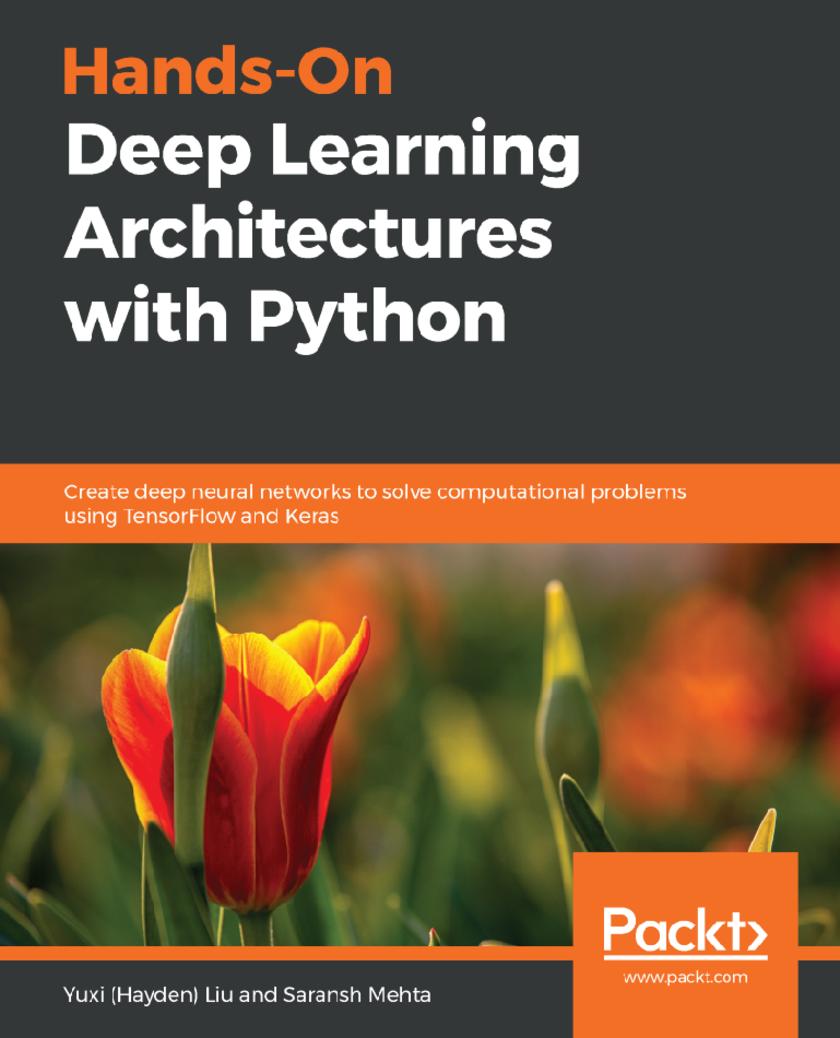
Hands-On Deep Learning Architectures with Python
¥53.40
Concepts, tools, and techniques to explore deep learning architectures and methodologies Key Features * Explore advanced deep learning architectures using various datasets and frameworks * Implement deep architectures for neural network models such as CNN, RNN, GAN, and many more * Discover design patterns and different challenges for various deep learning architectures Book Description Deep learning architectures are composed of multilevel nonlinear operations that represent high-level abstractions; this allows you to learn useful feature representations from the data. This book will help you learn and implement deep learning architectures to resolve various deep learning research problems. Hands-On Deep Learning Architectures with Python explains the essential learning algorithms used for deep and shallow architectures. Packed with practical implementations and ideas to help you build efficient artificial intelligence systems (AI), this book will help you learn how neural networks play a major role in building deep architectures. You will understand various deep learning architectures (such as AlexNet, VGG Net, GoogleNet) with easy-to-follow code and diagrams. In addition to this, the book will also guide you in building and training various deep architectures such as the Boltzmann mechanism, autoencoders, convolutional neural networks (CNNs), recurrent neural networks (RNNs), natural language processing (NLP), GAN, and more—all with practical implementations. By the end of this book, you will be able to construct deep models using popular frameworks and datasets with the required design patterns for each architecture. You will be ready to explore the potential of deep architectures in today's world. What you will learn * Implement CNNs, RNNs, and other commonly used architectures with Python * Explore architectures such as VGGNet, AlexNet, and GoogLeNet * Build deep learning architectures for AI applications such as face and image recognition, fraud detection, and many more * Understand the architectures and applications of Boltzmann machines and autoencoders with concrete examples * Master artificial intelligence and neural network concepts and apply them to your architecture * Understand deep learning architectures for mobile and embedded systems Who this book is for If you’re a data scientist, machine learning developer/engineer, or deep learning practitioner, or are curious about AI and want to upgrade your knowledge of various deep learning architectures, this book will appeal to you. You are expected to have some knowledge of statistics and machine learning algorithms to get the best out of this book

Professional Azure SQL Database Administration
¥79.56
Leverage the features of Azure SQL database and become an expert in data management Key Features * Explore ways to create shards and elastic pools to scale Azure SQL databases * Automate common management tasks with PowerShell * Implement over 40 practical activities and exercises to reinforce your learning Book Description Despite being the cloud version of SQL Server, Azure SQL Database differs in key ways when it comes to management, maintenance, and administration. This book shows you how to administer Azure SQL database to fully benefit from its wide range of features and functionality. Professional Azure SQL Database Administration begins by covering the architecture and explaining the difference between Azure SQL Database and the on-premise SQL Server to help you get comfortable with Azure SQL database. You’ll perform common tasks such as migrating, backing up, and restoring a SQL Server database to an Azure database. As you progress, you’ll study how you can save costs and manage and scale multiple SQL Databases using elastic pools. You’ll also implement a disaster recovery solution using standard and active geo-replication. Whether it is learning different techniques to monitor and tune an Azure SQL database or improving performance using in-memory technology, this book will enable you to make the most out of Azure SQL database features and functionality for data management solutions. By the end of this book, you’ll be well versed with key aspects of an Azure SQL database instance, such as migration, backup restorations, performance optimization, high availability, and disaster recovery. What you will learn * Understand Azure SQL Database configuration and pricing options * Provision a new SQL database or migrate an existing on-premise SQL Server database to Azure SQL Database * Back up and restore Azure SQL Database * Secure an Azure SQL database * Scale an Azure SQL database * Monitor and tune an Azure SQL database * Implement high availability and disaster recovery with Azure SQL Database * Automate common management tasks with PowerShell * Develop a scalable cloud solution with Azure SQL Database * Manage, maintain, and secure managed instances Who this book is for If you’re a database administrator, database developer, or an application developer interested in developing new applications or migrating existing ones with Azure SQL database, this book is for you. Prior experience of working with an on-premise SQL Server or Azure SQL database along with a basic understanding of PowerShell scripts and C# code is necessary to grasp the concepts covered in this book.
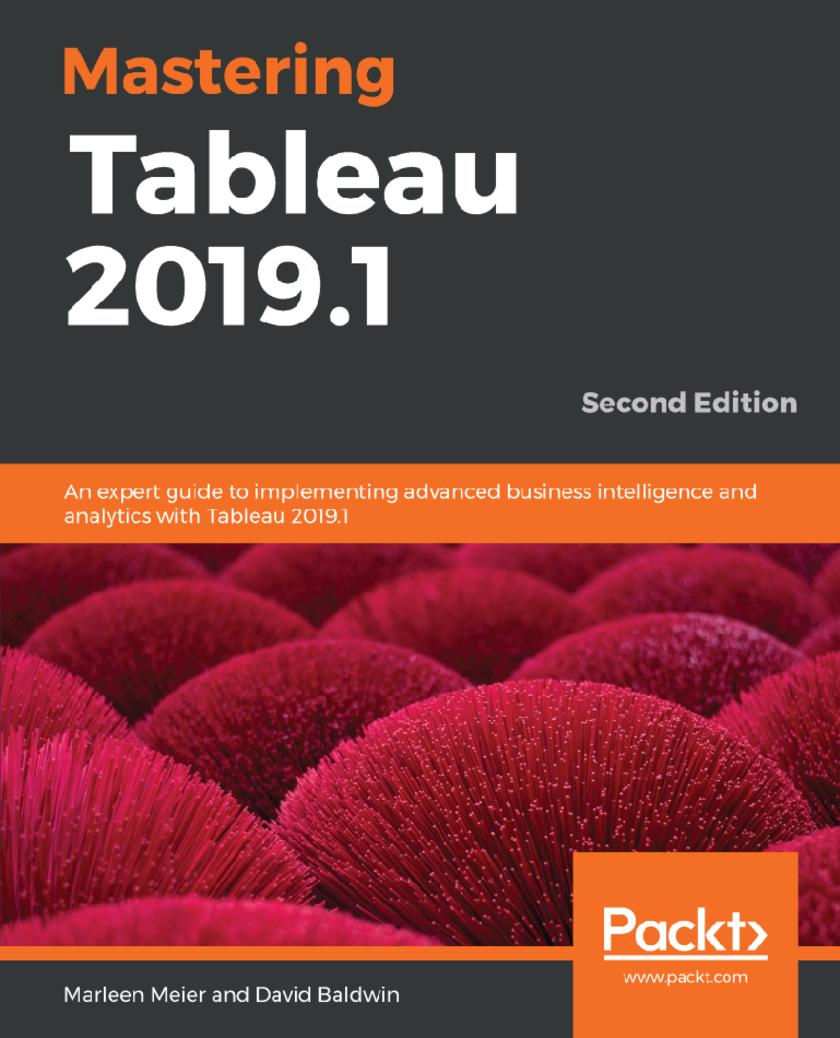
Mastering Tableau 2019.1
¥81.74
Build, design and improve advanced business intelligence solutions using Tableau’s latest features, including Tableau Prep, Tableau Hyper, and Tableau Server Key Features * Master new features in Tableau 2019.1 to solve real-world analytics challenges * Perform Geo-Spatial Analytics, Time Series Analysis, and self-service analytics using real-life examples * Build and publish dashboards and explore storytelling using Python and MATLAB integration support Book Description Tableau is one of the leading business intelligence (BI) tools used to solve BI and analytics challenges. With this book, you will master Tableau's features and offerings in various paradigms of the BI domain. This book is also the second edition of the popular Mastering Tableau series, with new features, examples, and updated code. The book covers essential Tableau concepts and its advanced functionalities. Using Tableau Hyper and Tableau Prep, you’ll be able to handle and prepare data easily. You’ll gear up to perform complex joins, spatial joins, union, and data blending tasks using practical examples. Following this, you’ll learn how to perform data densification to make displaying granular data easier. Next, you’ll explore expert-level examples to help you with advanced calculations, mapping, and visual design using various Tableau extensions. With the help of examples, you’ll also learn about improving dashboard performance, connecting Tableau Server, and understanding data visualizations. In the final chapters, you’ll cover advanced use cases such as Self-Service Analytics, Time Series Analytics, and Geo-Spatial Analytics, and learn to connect Tableau to R, Python, and MATLAB. By the end of this book, you’ll have mastered the advanced offerings of Tableau and be able to tackle common and not-so-common challenges faced in the BI domain. What you will learn * Get up to speed with various Tableau components * Master data preparation techniques using Tableau Prep * Discover how to use Tableau to create a PowerPoint-like presentation * Understand different Tableau visualization techniques and dashboard designs * Interact with the Tableau server to understand its architecture and functionalities * Study advanced visualizations and dashboard creation techniques * Brush up on powerful Self-Service Analytics, Time Series Analytics, and Geo-Spatial Analytics Who this book is for This book is designed for business analysts, BI professionals and data analysts who want to master Tableau to solve a range of data science and business intelligence problems. The book is ideal if you have a good understanding of Tableau and want to take your skills to the next level.

Learn Chart.js
¥54.49
Design interactive graphics and visuals for your data-driven applications using the popular open-source Chart.js data visualization library. Key Features * Harness the power of JavaScript, HTML, and CSS to create interactive visualizations * Display quantitative information efficiently in the form of attractive charts by using Chart.js * A practical guide for creating data-driven applications using open-source JavaScript library Book Description Chart.js is a free, open-source data visualization library, maintained by an active community of developers in GitHub, where it rates as the second most popular data visualization library. If you want to quickly create responsive Web-based data visualizations for the Web, Chart.js is a great choice. This book guides the reader through dozens of practical examples, complete with code you can run and modify as you wish. It is a practical hands-on introduction to Chart.js. If you have basic knowledge of HTML, CSS and JavaScript you can learn to create beautiful interactive Web Canvas-based visualizations for your data using Chart.js. This book will help you set up Chart.js in a Web page and show how to create each one of the eight Chart.js chart types. You will also learn how to configure most properties that override Chart’s default styles and behaviors. Practical applications of Chart.js are exemplified using real data files obtained from public data portals. You will learn how to load, parse, filter and select the data you wish to display from those files. You will also learn how to create visualizations that reveal patterns in the data. This book is based on Chart.js version 2.7.3 and ES2015 JavaScript. By the end of the book, you will be able to create beautiful, efficient and interactive data visualizations for the Web using Chart.js. What you will learn * Learn how to create interactive and responsive data visualizations using Chart.js * Learn how to create Canvas-based graphics without Canvas programming * Create composite charts and configure animated data updates and transitions * Efficiently display quantitative information using bar and line charts, scatterplots, and pie charts * Learn how to load, parse, and filter external files in JSON and CSV formats * Understand the benefits of using a data visualization framework Who this book is for The ideal target audience of this book includes web developers and designers, data journalists, data scientists and artists who wish to create interactive data visualizations for the Web. Basic knowledge of HTML, CSS, and JavaScript is required. No Canvas knowledge is necessary.
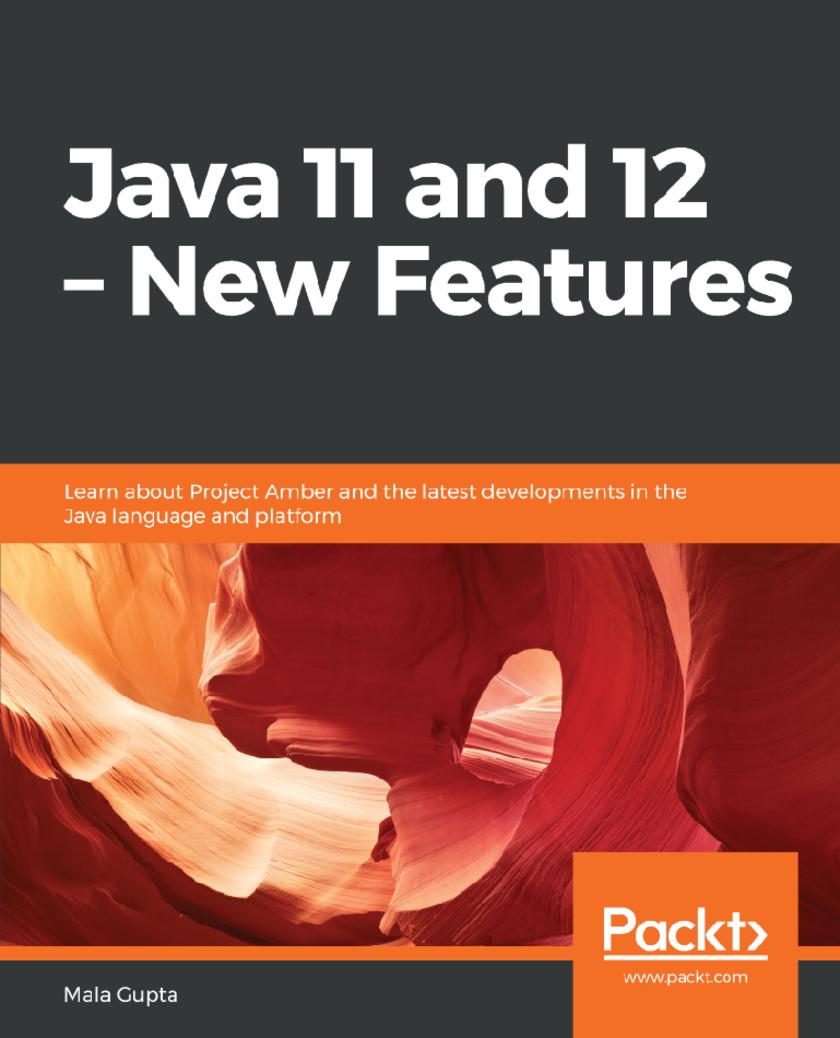
Java 11 and 12 – New Features
¥54.49
Enhance your development skills with Java’s state-of-the-art features and projects to make your applications leaner and faster Key Features * Overcome the challenges involved in migrating to new versions of Java * Discover how Oracle has bridged the gap between Java and native code * Make the best use of new Java features and libraries in your applications Book Description With its new six-monthly release cadence, Java is moving forward faster. In addition to planned version releases, a lot of work is currently being undertaken on various Java projects at Oracle. In order to make best use of the new features in their applications and libraries, you must be well-versed with the most recent advancements. Java 11 and 12 – New Features will take you through the latest developments in Java, right from variable type inference and simplified multithreading through to performance improvements, which are covered in depth to help you make your applications more efficient. This book explains the relevance and applicability of Java's new features, and answers your questions on whether to invest in migrating to new Java versions and when to migrate. You'll also get to grips with platform features, such as AppCDS and new garbage collectors, to tune and optimize your application—from reduced launch time and latency to improved performance and throughput. By the end of this book, you will be equipped with a thorough understanding of the new features of Java 11, 12, and Project Amber, and possess the skills to apply them with a view to improving your application's performance. What you will learn * Study type interference and how to work with the var type * Understand Class-Data Sharing, its benefits, and limitations * Discover platform options to reduce your application’s launch time * Improve application performance by switching garbage collectors * Get up to date with the new Java release cadence * Define and assess decision criteria for migrating to a new version of Java Who this book is for If you’re an executive or solutions architect responsible for technology selection or Java migration decisions, this Java book is for you. You’ll also benefit from this book if you’re a computer science enthusiast curious to learn about the latest and upcoming Java features. This book will help you migrate your solutions from Java 8 or older to the latest Java release.
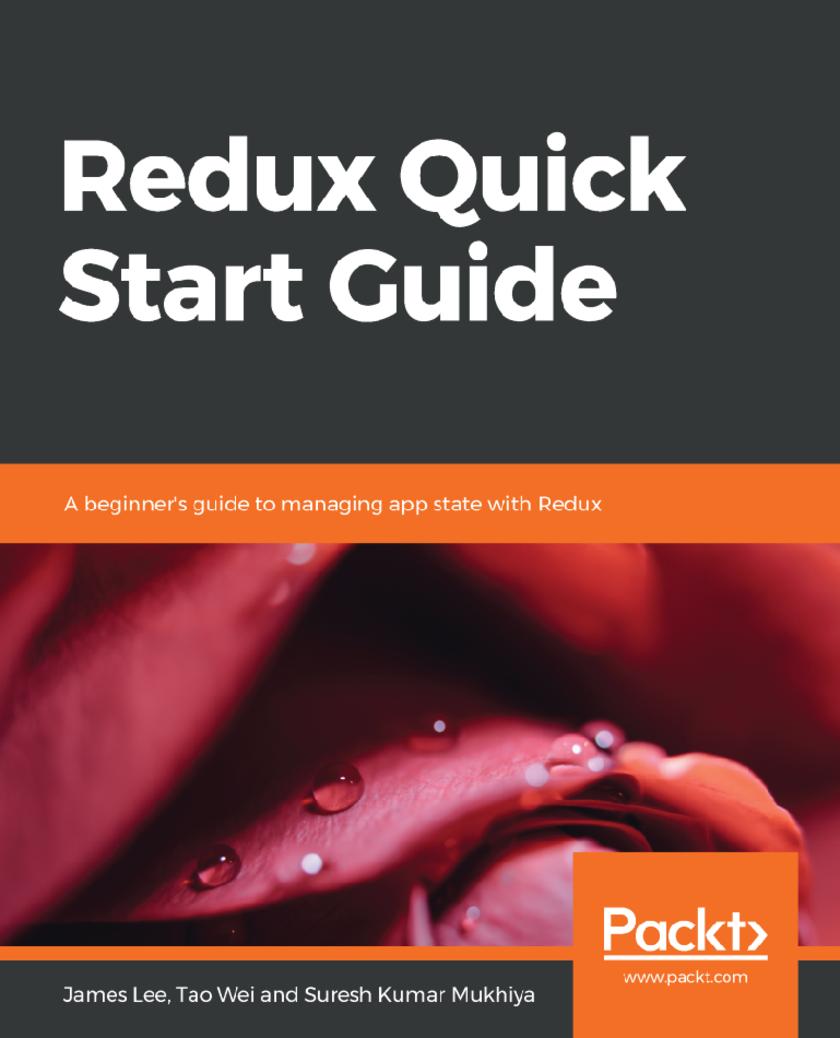
Redux Quick Start Guide
¥54.49
Integrate Redux with React and other front-end JavaScript frameworks efficiently and manage application states effectively Key Features * Get better at building web applications with state management using Redux * Learn the fundamentals of Redux to structure your app more efficiently * This guide will teach you develop complex apps that would be easier to maintain Book Description Starting with a detailed overview of Redux, we will follow the test-driven development (TDD) approach to develop single-page applications. We will set up JEST for testing and use JEST to test React, Redux, Redux-Sage, Reducers, and other components. We will then add important middleware and set up immutableJS in our application. We will use common data structures such as Map, List, Set, and OrderedList from the immutableJS framework. We will then add user interfaces using ReactJS, Redux-Form, and Ant Design. We will explore the use of react-router-dom and its functions. We will create a list of routes that we will need in order to create our application, and explore routing on the server site and create the required routes for our application. We will then debug our application and integrate Redux Dev tools. We will then set up our API server and create the API required for our application. We will dive into a modern approach to structuring our server site components in terms of Model, Controller, Helper functions, and utilities functions. We will explore the use of NodeJS with Express to build the REST API components. Finally, we will venture into the possibilities of extending the application for further research, including deployment and optimization. What you will learn * Follow the test-driven development (TDD) approach to develop a single-page application * Add important middleware, such as Redux store middleware, redux-saga middleware, and language middleware, to your application * Understand how to use immutableJS in your application * Build interactive components using ReactJS * Configure react-router-redux and explore the differences between react-router-dom and react-router-redux * Use Redux Dev tools to debug your application * Set up our API server and create the API required for our application Who this book is for This book is meant for JavaScript developers interesting in learning state management and building easy to maintain web applications.
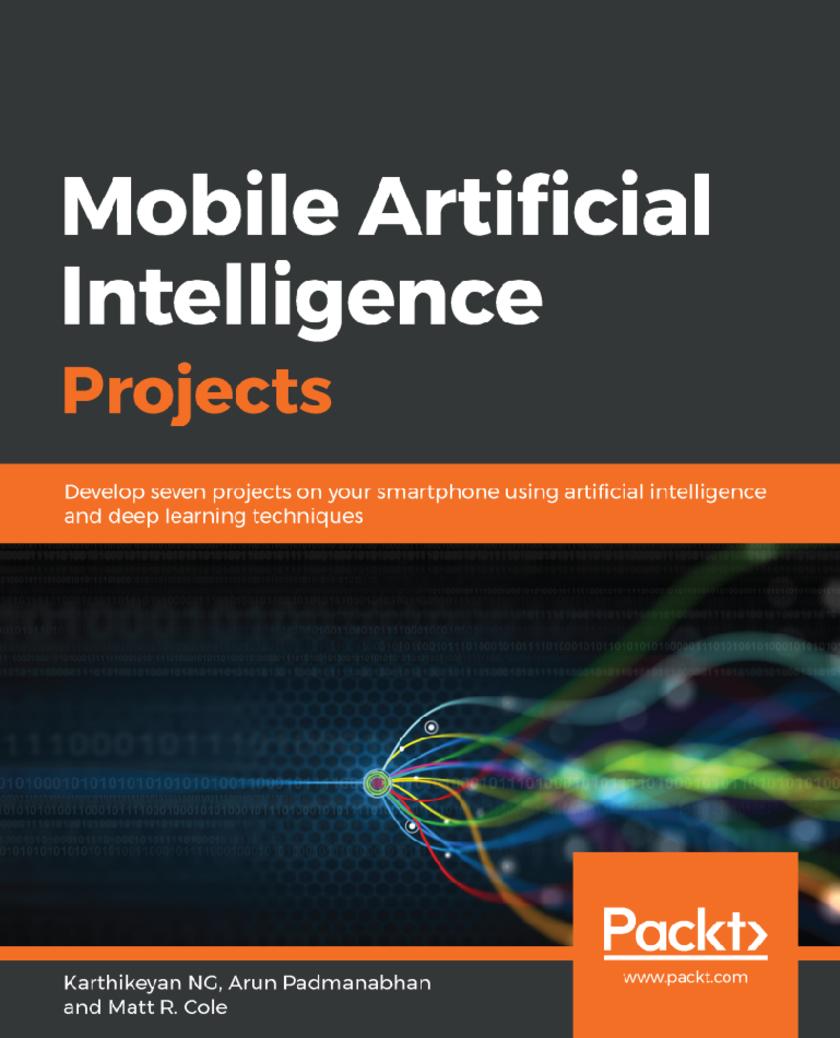
Mobile Artificial Intelligence Projects
¥63.21
Learn to build end-to-end AI apps from scratch for Android and iOS using TensorFlow Lite, CoreML, and PyTorch Key Features * Build practical, real-world AI projects on Android and iOS * Implement tasks such as recognizing handwritten digits, sentiment analysis, and more * Explore the core functions of machine learning, deep learning, and mobile vision Book Description We’re witnessing a revolution in Artificial Intelligence, thanks to breakthroughs in deep learning. Mobile Artificial Intelligence Projects empowers you to take part in this revolution by applying Artificial Intelligence (AI) techniques to design applications for natural language processing (NLP), robotics, and computer vision. This book teaches you to harness the power of AI in mobile applications along with learning the core functions of NLP, neural networks, deep learning, and mobile vision. It features a range of projects, covering tasks such as real-estate price prediction, recognizing hand-written digits, predicting car damage, and sentiment analysis. You will learn to utilize NLP and machine learning algorithms to make applications more predictive, proactive, and capable of making autonomous decisions with less human input. In the concluding chapters, you will work with popular libraries, such as TensorFlow Lite, CoreML, and PyTorch across Android and iOS platforms. By the end of this book, you will have developed exciting and more intuitive mobile applications that deliver a customized and more personalized experience to users. What you will learn * Explore the concepts and fundamentals of AI, deep learning, and neural networks * Implement use cases for machine vision and natural language processing * Build an ML model to predict car damage using TensorFlow * Deploy TensorFlow on mobile to convert speech to text * Implement GAN to recognize hand-written digits * Develop end-to-end mobile applications that use AI principles * Work with popular libraries, such as TensorFlow Lite, CoreML, and PyTorch Who this book is for Mobile Artificial Intelligence Projects is for machine learning professionals, deep learning engineers, AI engineers, and software engineers who want to integrate AI technology into mobile-based platforms and applications. Sound knowledge of machine learning and experience with any programming language is all you need to get started with this book.
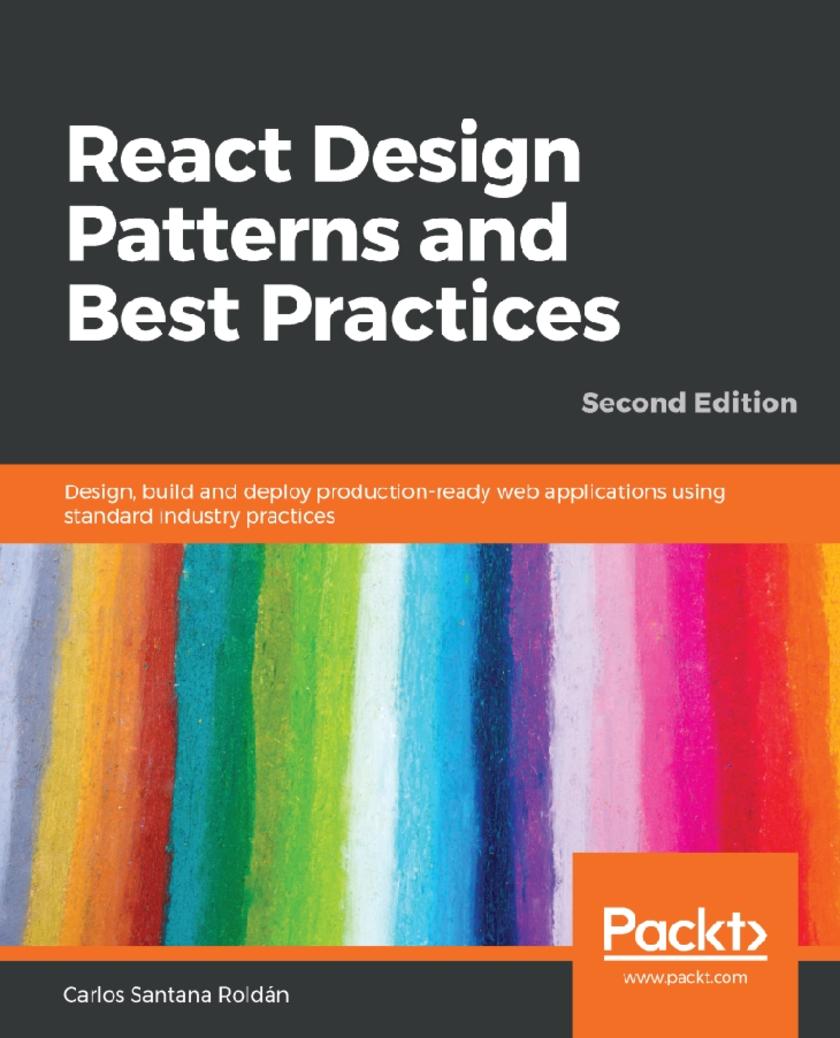
React Design Patterns and Best Practices
¥73.02
Build modular React web apps that are scalable, maintainable and powerful using design patterns and insightful practices Key Features * Get familiar with design patterns in React like Render props and Controlled/uncontrolled inputs * Learn about class/ functional, style and high order components with React * Work through examples that can be used to create reusable code and extensible designs Book Description React is an adaptable JavaScript library for building complex UIs from small, detached bits called components. This book is designed to take you through the most valuable design patterns in React, helping you learn how to apply design patterns and best practices in real-life situations. You’ll get started by understanding the internals of React, in addition to covering Babel 7 and Create React App 2.0, which will help you write clean and maintainable code. To build on your skills, you will focus on concepts such as class components, stateless components, and pure components. You'll learn about new React features, such as the context API and React Hooks that will enable you to build components, which will be reusable across your applications. The book will then provide insights into the techniques of styling React components and optimizing them to make applications faster and more responsive. In the concluding chapters, you’ll discover ways to write tests more effectively and learn how to contribute to React and its ecosystem. By the end of this book, you will be equipped with the skills you need to tackle any developmental setbacks when working with React. You’ll be able to make your applications more flexible, efficient, and easy to maintain, thereby giving your workflow a boost when it comes to speed, without reducing quality. What you will learn * Get familiar with the new React features,like context API and React Hooks * Learn the techniques of styling and optimizing React components * Make components communicate with each other by applying consolidate patterns * Use server-side rendering to make applications load faster * Write a comprehensive set of tests to create robust and maintainable code * Build high-performing applications by optimizing components Who this book is for This book is for web developers who want to increase their understanding of React and apply it to real-life application development. Prior experience with React and JavaScript is assumed.
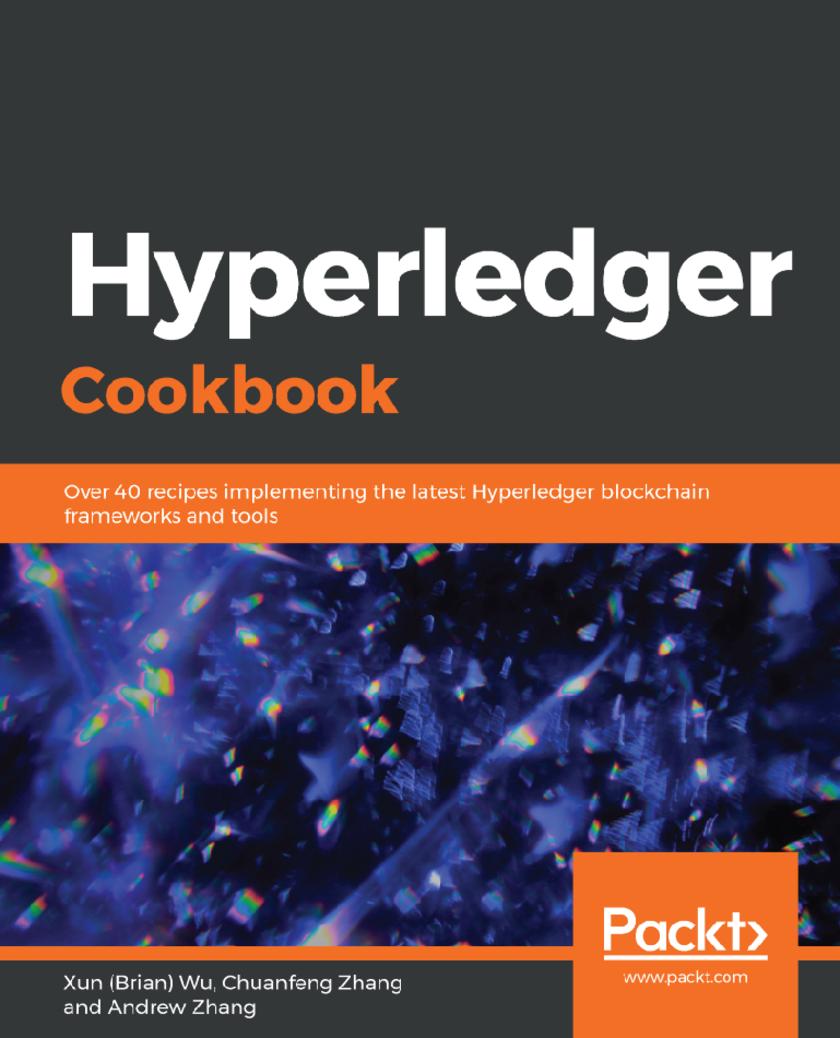
Hyperledger Cookbook
¥62.12
Explore the entire Hyperledger blockchain family, including frameworks such as Fabric, Sawtooth, Indy, Burrow, and Iroha; and tools such as Composer, Explorer, and Caliper. Key Features * Plan, design, and create a full-fledged private decentralized application using Hyperledger services * Master the ins and outs of the Hyperledger network using real-world examples * Packed with problem-solution-based recipes to tackle pain areas in the blockchain development cycle Book Description Hyperledger is an open-source project and creates private blockchain applications for a range of domains. This book will be your desk reference as you explore common and not-so-common challenges faced while building blockchain networks using Hyperledger services. We'll work through all Hyperledger platform modules to understand their services and features and build end-to-end blockchain applications using various frameworks and tools supported by Hyperledger. This book's independent, recipe-based approach (packed with real-world examples) will familiarize you with the blockchain development cycle. From modeling a business network to integrating with various tools, you will cover it all. We'll cover common and not-so-common challenges faced in the blockchain life cycle. Later, we'll delve into how we can interact with the Hyperledger Fabric blockchain, covering all the principles you need to master, such as chaincode, smart contracts, and much more. We'll also address the scalability and security issues currently faced in blockchain development. By the end of this book, you will be able to implement each recipe to plan, design, and create a full-fledged, private, decentralized application to meet organizational needs. What you will learn * Create the most popular permissioned blockchain network with Fabric and Composer * Build permissioned and permission-less blockchains using Sawtooth * Utilize built-in Iroha asset/account management with role-based permissions * Implement and run Ethereum smart contracts with Burrow * Get to grips with security and scalability in Hyperledger * Explore and view blockchain data using Hyperledger Explorer * Produce reports containing performance indicators and benchmarks using Caliper Who this book is for This book is for blockchain developers who want to understand how they can apply Hyperledger services in their day-to-day projects. This book uses a recipe-based approach to help you use Hyperledger to build powerful, decentralized autonomous applications. We assume the reader has a basic knowledge of the Blockchain technology and cryptography concepts




 购物车
购物车 个人中心
个人中心



